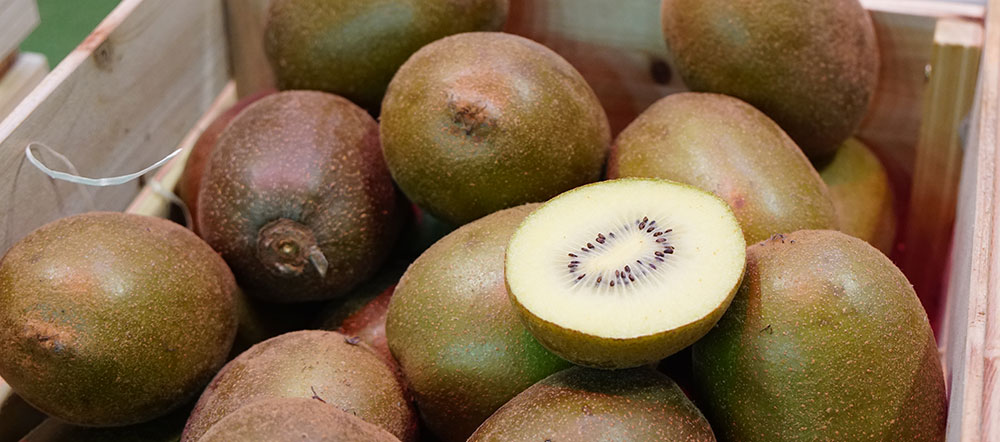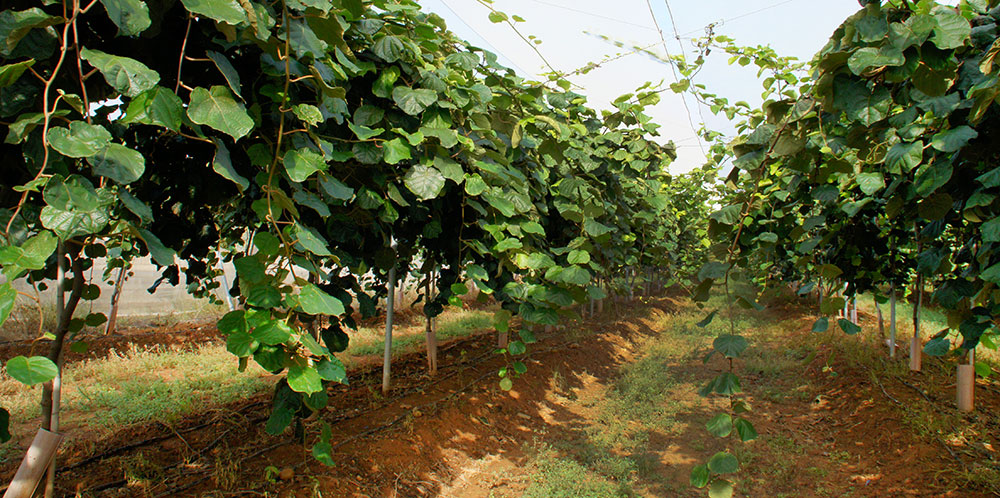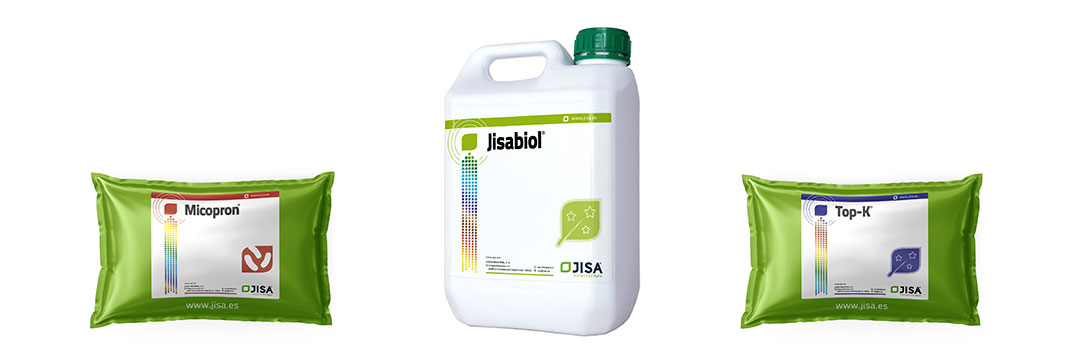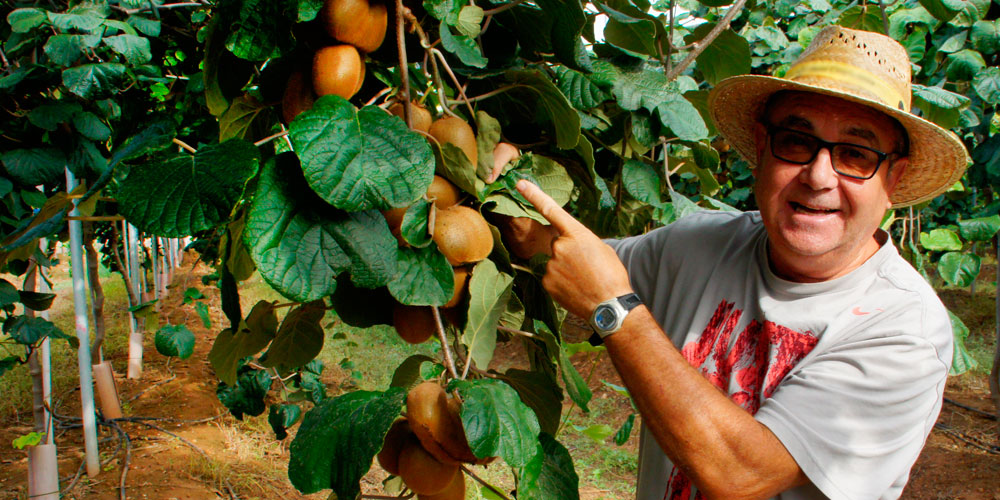Kiwi is a fruit of the genre Actinidia spp. given its popularity, it is the name with which it is associated with this fruit as well. A fruit deciduous and belonging to the family Actinidiaceae.
Of this genus, only three of its species produce fruits with commercial value:
- Actinidia deliciosa. With green pulp fruits and hairy skin.
- Actinidia chinensis. With yellow pulp fruits and glabrous skin.
- Actinidia arguta. With small kiwi fruits, green pulp and lampiño, also known as kiwiño, dwarf kiwi or baby pear.
Kiwi or actinidia, as is also known, is native from China, where it can be found in the wild. Currently the production areas are mainly between the 30th and 40th parallels, both in the northern hemisphere (Italy, France, Greece, Spain and Portugal) where production is marketed from October to June, and in the southern hemisphere (New Zealand and Chile) where it is marketed from June to November. Thus, from a globalization point of view, this fruit becomes present during the 365 days in the fruit and vegetables markets.

Kiwi varieties
The agronomic importance of kiwi carries with it genetic improvement, oriented both to productivity (vigor, production, resistances, etc.) and to the quality of its fruits. Note that it is a dioetian species, therefore, there are male and female plants. Only female kiwi plants will bear fruit, although there must be a sufficient population of males in the crop to ensure proper production through their pollination.
The kiwi plant (actinidia) is a deciduous shrub and as thus, it has chilling requirement accumulation needs. A lack of cold in the crop leads to a reduction in the final production, consequently, JISA technical team, recommends a previous study for implementing the crop in a particular area.
It is a crop that needs deep, sandy soils, with a slightly acidic pH of 6 to 6.5 and with good permeability, as it is very sensitive to parting, salinity and active limestone.
Generally, we expose below some aspects about the cultivation of kiwi or actinidia depending on the species:
Actinidia deliciosa. Its cultivation has chill hour needs. Female varieties produce green pulp fruits and hairy skin and have a need of 600 to 800 hours. Among the most commercial varieties are mainly Hayward, Summerkiwi, Green light, Megakiwi and Meris.
The Hayward variety is by far the most widespread variety for its high productivity and fruit quality. Its fruits are large, about 100 grams, with very good post-harvest shelf life and flavor. The most commonly used pollinating varieties are Tomuri and Matua.
Actinidia chinensis. As for varieties of kiwi or Actinidia of yellow pulp and glabrous skin, their cold hours needs are lower, from 300 to 400 hours. Therefore, it can be grown in warmer areas than the ones with green pulp. They are also less sensitive to calcareous soils.
The most outstanding varieties of this species are, Jintao, Sun Gold, Soreli and Dori.
Actinidia arguta. Its production volume, compared to the previous two groups is lower. The most commercial varieties of this species are Ananasnaja, Meader and Lager.
Actinidia Fertilization Program
Establishing a correct fertilization program is essential to maintain a healthy and productive crop. And kiwi is no exception.
The JISA technical team recommends always starting from the knowledge of the main physical-chemical parameters of the planting soil and performing foliar analyses, in order to correct possible deviations and thus obtain the best results in terms of production and quality.

Proper soil maintenance for kiwi cultivation
Among the JISA product range of soil improvers, Humilig® and Kitasal® help to keep soil properties within the ideal parameters for cultivation, in terms of texture, pH and salinity.
Maintaining an organic matter content between 2 and 3% helps maintain the physical soil properties, and keeps its microbial life active, preventing the progressive deterioration of the agricultural soil by the excessive use of mineral fertilizers. Molex® and Furdos® (Fulvin®) are organic fertilizers that give the crop a biostimulant effect at the same time as they activate soil microorganisms.
Kiwi root system is very superficial, so it is very sensitive to waterlogging. Lack of oxygen causes inhibition in the formation of new roots.
The use of mycorrhizals in actinidia helps to increase the area of contact between the soil and the root, favoring the arrangement of nutrients, improving their tolerance to active limestone and favoring the establishment of the plant free of pathogenic microorganisms.
In this line, JISA customers have at their disposal products such as Micopron® (consortium of mycorrhizal fungi and PGPR bacteria), Fusvicur® and Vitatek®, products based on mycorrhizals and rhizobacteria that helps to:
- Maintain the fertility of our soils.
- Provide a biostimulant effect on the crop, predisposing it to a higher tolerance of extreme weather conditions of temperature and humidity.
- Activate the plant’s defenses against pathogenic microorganisms.

Fertilizers to improve kiwi cultivation
Kiwi (actinidia) is a climbing plant that, like the grapevine, produces kind of vine shots where buds that sprout when spring arrives are located, initiating the vegetative phase of the crop.
The correct arrangement of their shots through pruning and tutoring, together with a vegetative balance are essential when it comes to obtaining good production results. In fact, the lack of light caused by excess vegetation is an important factor in the loss of caliber and quality of the fruits.
Therefore, the JISA technical team, emphasizes in this growing phase that it is essential to provide amino acids of type Vegetamin 24® or Jisabiol® (mix of free amino acids and peptides from bovine collagen), as well as microelements essential for the flowering and curdling phase of fruits, which will be carried out with products of the Nutrijisa® family.
Calcium is a very important element for the future development of kiwi fruits, requiring much of their needs in the early stages of the fruit.
Flowering and fruit setting is a critical moment in cultivation and therefore of its profitability. Low relative humidity or temperatures above 26ºC can lead to pollen dehydration and lack of curdling. It is essential that we ensure that we act to minimize the possible consequences of these external agents that may undermine productibility. To do this, with applications of special biostimulants JISA such as Cuajemax®, it ensures the natural mass of production, improves the viability of pollen and its germination.
Once its flowers are curdled, Engormax® biostimulant provides a good fattening of fruits in addition to a high content of dry matter of the fruit; this will help us to have a good productivity and fruit quality.
Magnesium is an element to consider. This element is in balance with calcium and potassium, so an excess in the contribution of the above elements causes a lack of Magnesium in the crop. This is why, at this stage we have to see which secondary elements and microelements may be in a defiable state in our crop. Nutrijisa® range of deficiency correctors provides a wide range of products to intervene with foliar treatments depending on the nutritional needs of the kiwi crop.
The phase of accumulation of dry matter in the fruit takes place in the summer months, with conditions of extreme temperature and humidity. During this period, we recommend the use of special biostimulants such as Glybet®, Gorfrut® and Top-K® (biostimulation and potassium nutrition) according to the different stages of the crop in which we find ourselves. This will help the plant overcome the stress caused by these conditions and avoid possible dehydrations that affect our crop. At the same time, proper irrigation management is essential during this period. Actinidia in cultivation has a lot of water needs, but with great sensitivity to waterlogged soil, as we mentioned above.
How to prepare the cultivation of actinidia for winter?
After harvesting, you should start thinking about next year’s production.
Post-massage nutritional treatments help the plant accumulate the reserves it will use in the first moments of the next year’s sprouting, so it is important to contribute the main elements before the total fall of the leaves, at which point the plant enters a winter stop.
For any questions, or technical queries about the cultivation of kiwi (actinidia), you have at your disposal our technical-commercial team of JISA, which can help them obtain optimal yields and therefore increase their profitability.
